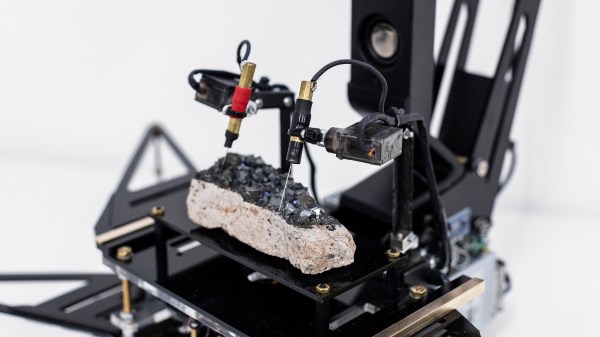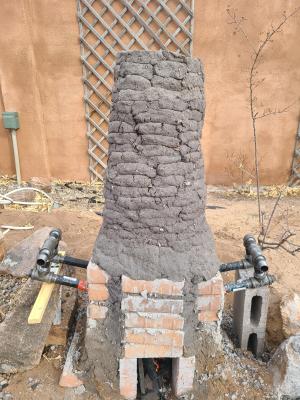Hidden states are a fascinating aspect of matter, as these can not normally be reached via natural processes (i.e. non-ergodic), but we can establish them using laser photoexcitation. Although these hidden states are generally very unstable and will often decay within a nanosecond, there is evidence for more persistent states in e.g. vanadates. As for practical uses of these states, electronics and related fields are often mentioned. This is also the focus in the press release by the Ecole Polytechnique Federale de Lausanne (EPFL) when reporting on establishing hidden states in magnetite (Fe3O4), with the study published in PNAS (Arxiv preprint link).
[B. Truc] and colleagues used two laser frequencies to either make the magnetite more conductive (800 nm) or a better insulator (400 nm). The transition takes on the order of 50 picoseconds, allowing for fairly rapid switching between these metastable states. Naturally, turning this into practical applications will require a lot more work, especially considering the need for femtosecond pulsed lasers to control the process, which makes it significantly more cumbersome than semiconductor technology. Its main use at this point in time will remain a fascinating demonstration of these hidden states of matter.



 probed per run, but however it works it produces some interesting, almost random results. The premise is that the point-to-point surface resistivity is unpredictable due to the chaotically formed crystals all jumbled up, but somehow uses these measured data to generate some waveshapes vaguely reminiscent of the resistivity profile of the sample, the output of which is then fed into a sound synthesis application and pumped out of a speaker. It certainly looks fun.
probed per run, but however it works it produces some interesting, almost random results. The premise is that the point-to-point surface resistivity is unpredictable due to the chaotically formed crystals all jumbled up, but somehow uses these measured data to generate some waveshapes vaguely reminiscent of the resistivity profile of the sample, the output of which is then fed into a sound synthesis application and pumped out of a speaker. It certainly looks fun.

 This began by collecting 150 pounds (!) of magnetic dirt from dry lake beds while hiking using a magnet pickup tool with release lever that he got from Harbor Freight. Several repeated magnetic refining passes separated the black ore from non-metallic sands ready for the furnace that he built. That is used to fire up the raw materials using 150 pounds of charcoal, changing the chemical composition by adding carbon and resulting in a gnarly lump of iron
This began by collecting 150 pounds (!) of magnetic dirt from dry lake beds while hiking using a magnet pickup tool with release lever that he got from Harbor Freight. Several repeated magnetic refining passes separated the black ore from non-metallic sands ready for the furnace that he built. That is used to fire up the raw materials using 150 pounds of charcoal, changing the chemical composition by adding carbon and resulting in a gnarly lump of iron 










